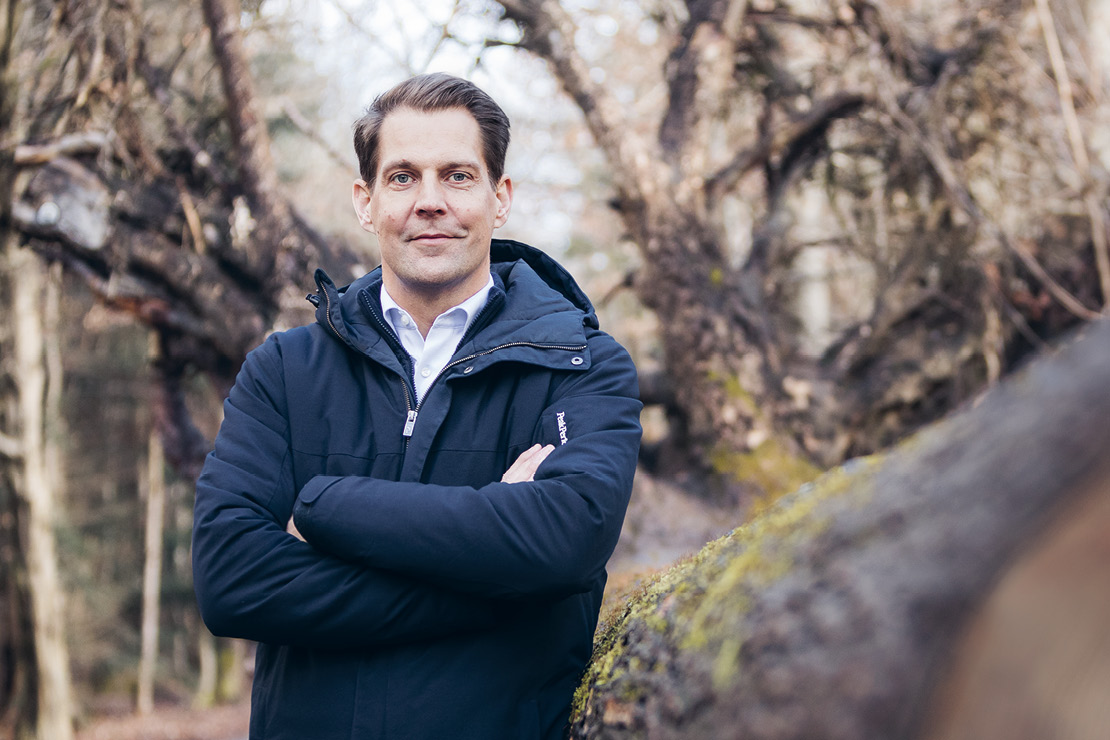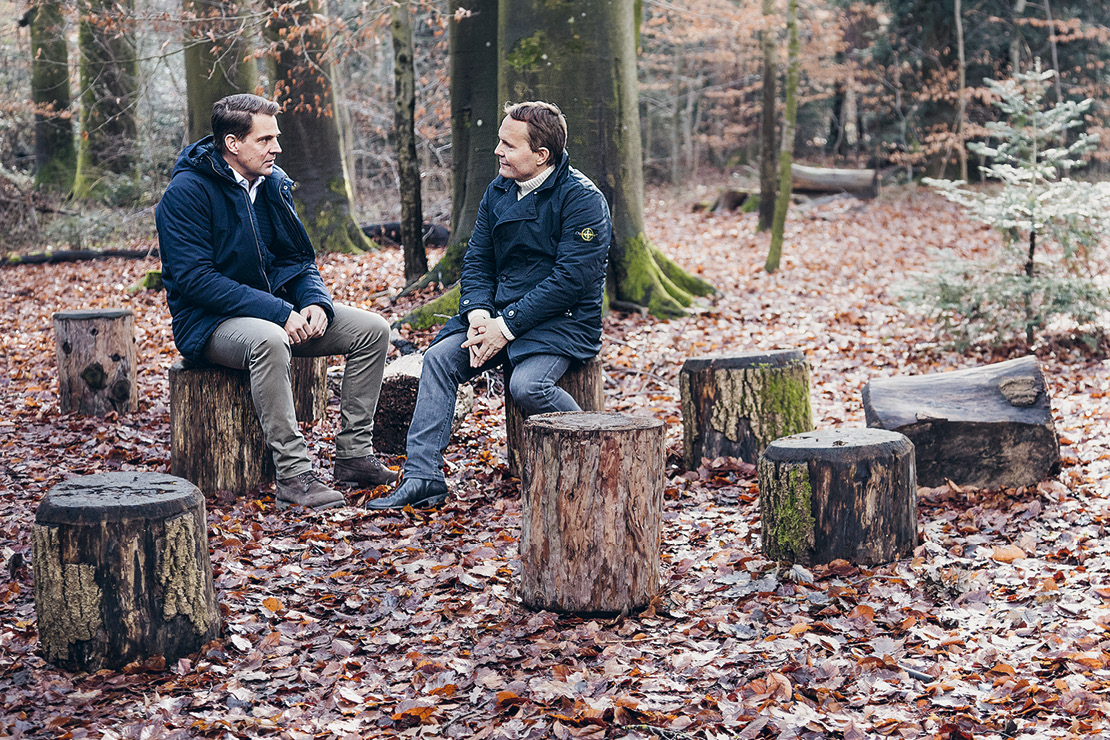
In dialog with Dr. Gunnar Güthenke
Carbon footprint, new raw materials, security of supply – with the transformation to electric mobility, automotive supply chains are facing new challenges. Gunnar Güthenke, Head of Procurement and Supplier Quality at Mercedes-Benz, talks about how Mercedes-Benz Procurement is addressing these issues and why sustainability in the supply chain is particularly important.
Mr Güthenke, climate neutrality is one of the most important terms being used these days. How are you approaching this topic at Mercedes-Benz? What role does Procurement play in this?
At Mercedes-Benz, we have made a clear commitment to »Electric Only«. This means that we are ready to go all-electric by the end of this decade – wherever the market conditions allow. In this way, we are accelerating our transformation toward an all-electric, zero-emissions future. We take a holistic approach to the issue of climate neutrality. To this end, Mercedes-Benz has launched Ambition 2039, with which we aim to achieve CO2-neutrality along the entire value chain including our partners and suppliers. Procurement plays an important role here, because the transformation to electric mobility increases the energy demand in the supply chain.
But the decisions we make in Procurement don’t just affect the carbon footprint of our vehicles. They also have consequences for the responsible use of resources and for compliance with human rights in the supply chain. Mercedes-Benz is a global company, and our responsibility does not end at our plant gates. Sustainability in the supply chain is therefore something we take very seriously.
How do you reduce the carbon footprint along the supply chain? Do your suppliers go along with these efforts?
We are serious about our climate targets. It is also clear that we can only meet them in close cooperation with our partners, which is why we go into implementation together with them. To this end, we have developed a dual strategy that goes both broadly and in depth.
We cover the breadth by making CO2 a key criterion for contract awarding. This applies to all components in the vehicle – without any exceptions. Our supplier network shows great commitment here: suppliers representing more than 90% of our annual purchasing volume, and thus all relevant partners, have already agreed to supply us only with CO2-neutral products from 2039. We are very pleased about this, and it encourages us in our approach.
For certain products and materials, we additionally take a more in-depth approach. This applies to focus materials such as steel, plastics, aluminum and battery cells. Since these products are particularly CO2-intensive in terms of production and processing, our efforts here are particularly insistent. In concrete terms, this means that we look at the parts in detail and then initiate transforming measures, together with the suppliers, that enable us to systematically reduce the carbon footprint.
Our supplier network shows great commitment here: suppliers representing more than 90% of our annual purchasing volume, and thus all relevant partners, have already agreed to supply us only with CO2-neutral products from 2039.
What measures are you taking in these areas? After all, these are parts that will continue to be important for vehicle manufacturing in the future.
That’s true. Green steel, meaning CO2 neutrally produced steel, is often named as a major challenge on the way to a CO2-neutral supply chain. However, thanks to the advances made by important steel suppliers to Mercedes-Benz, we have recently reached some important milestones: we source steel from Salzgitter AG and Big River Steel with a significantly reduced carbon footprint by the use of recycled steel scrap. In the future, we will source steel from virtually CO2-free production, thanks to the switch to new technologies. To this end, we were the first car manufacturer to take an equity stake in the start-up H2 Green Steel and we have entered into a partnership with the Swedish steel producer SSAB. We are deliberately not focusing on offsetting here, but on the avoidance and reduction of CO2 emissions. Our goal is a CO2-free steel supply chain – that is what we are working toward with all our suppliers.
Another example is battery cells, which have a very special significance in the context of a green supply chain. We have therefore made it a key requirement for all battery cell partners that cell production must be CO2-neutral. This reduces emissions in battery production by around 30%. From this year, the CO2-neutrally produced cells will actually be used in all our EQ model series.
Our flagship EQS is already the first vehicle to be equipped with them. The fact that our suppliers’ cell production is CO2-neutral has also been verified and confirmed by the expert and testing organizations SGS and DEKRA.
Keyword battery cells: electric mobility requires large quantities of raw materials such as cobalt and lithium. How do you ensure responsible sourcing of these materials?
We want our products to contain only raw materials that have been mined and produced without environmental or human rights violations – human rights are non-negotiable for us. Therefore, in the future, we will only source battery raw materials from mines that are audited according to the »Initiative for Responsible Mining Assurance« standard for responsible mining.
In the first step, we will focus on cobalt and lithium, then step-by-step roll out the approach to further raw materials. This has been contractually agreed with our strategic battery cell partners and will apply to all battery cells in the future. In addition, we are having the cobalt supply chains of battery cell suppliers audited across all stages in accordance with OECD guidelines and have launched various projects with aid organizations and NGOs in the countries of origin of the raw materials. This is in line with the principle of using leverage before withdrawing, under which we actively work to protect the people and the environment in our supply chains rather than turning our back on problems.
But at the same time, you also have to secure the necessary quantities of required raw materials.
This is true and also important. We therefore look at every raw material in detail – regardless of whether we source it directly or through our supply chain. In each case, we pursue a distinct strategy that secures our requirements in the long term. Take lithium, for example – an important raw material that we need for our battery cells. For this, we have teamed up with Albemarle, a manufacturer of lithium compounds. By working directly together, we can secure supplies and at the same time take into account important sustainability aspects: we are working with our partner to reduce CO2 emissions in lithium mining and are also addressing recycling and responsible extraction of the raw material.
In addition, we are looking into the potential localization of battery-grade lithium production facilities in Europe and the USA.
Our long-term goal is basically to achieve more with less. That is why we are working with our suppliers to increase the recycled content of components and reduce the use of critical materials. A good example is cobalt: the proportion of cobalt in the cathodes of the EQS battery cells is already less than ten percent and has thus been significantly reduced compared with the previous generation of batteries. In the long term, we want to use post-lithium-ion technologies with new material compositions to eliminate the need for materials such as cobalt.
Doesn’t the implementation of these sustainability measures involve high additional costs? After all, price plays a big role in procurement.
For us, sustainability is not initially a cost factor, but a very important part of our procurement strategy. With sustainability as an important awarding criterion, we have made a clear commitment in this respect. Of course, we weigh our decisions thoroughly and also enter into discussions with the suppliers. However, at the end of the day, it is clear that we will only achieve our ambitious climate targets if we implement sustainability already in our supply chains.
That is why we are already actively tackling the issue today – and I am very confident that we will successfully manage this transformation in close cooperation with our partners.
How has the collaboration with your suppliers changed as a result of the transformation?
We continue to shape the transformation in collaboration with our partners and support them wherever possible. To this end, we rely, among other things, on long-term cooperation models and strategic partnerships. In this way, we secure our requirements and safeguard sustainability, but at the same time are able to work together on important technological advances. Many of our suppliers also deliver parts both for vehicles with electric drives and for those with conventional systems – this ensures flexibility on both sides and thus ensures a joint transition from which both parties benefit.
Our goal is to lead the entire supply chain – for this we go beyond our direct suppliers. The requirements for sustainability in the supply chain and the conclusions from the current semiconductor situation illustrate the necessity for this.




